Author: Patricia Larson, LVT; Updated September 5, 2025
Does the idea of having a 4-foot-long, 20-pound rabbit sound like fun to you? Are you looking for a patient, sociable rabbit that’s gentle with kids and other pets?
If you’re considering a giant rabbit as your next companion, there’s a lot to know. From the famous Flemish Giant rabbit to the rare British Giant rabbit, each breed has its own charm, personality, and care requirements.
But before bringing home one of these plus-sized bunnies, it’s important to understand their health needs, housing considerations, and lifespans. Let’s explore the world of large rabbit breeds, from record-holders to family-friendly pets.
What is the Largest Breed of Rabbit?
The Continental Giant and the Flemish Giant are often at the top of the list. While Flemish Giants usually weigh between 15–25 pounds and can reach up to 2.5 feet in length, the Continental Giant is known to get even larger.
The Guinness World Record holder, a Continental Giant named Darius, measured an incredible 4 feet 3 inches long and weighed nearly 50 pounds! Both breeds are considered giant rabbits, but the Continental currently holds the title for largest.
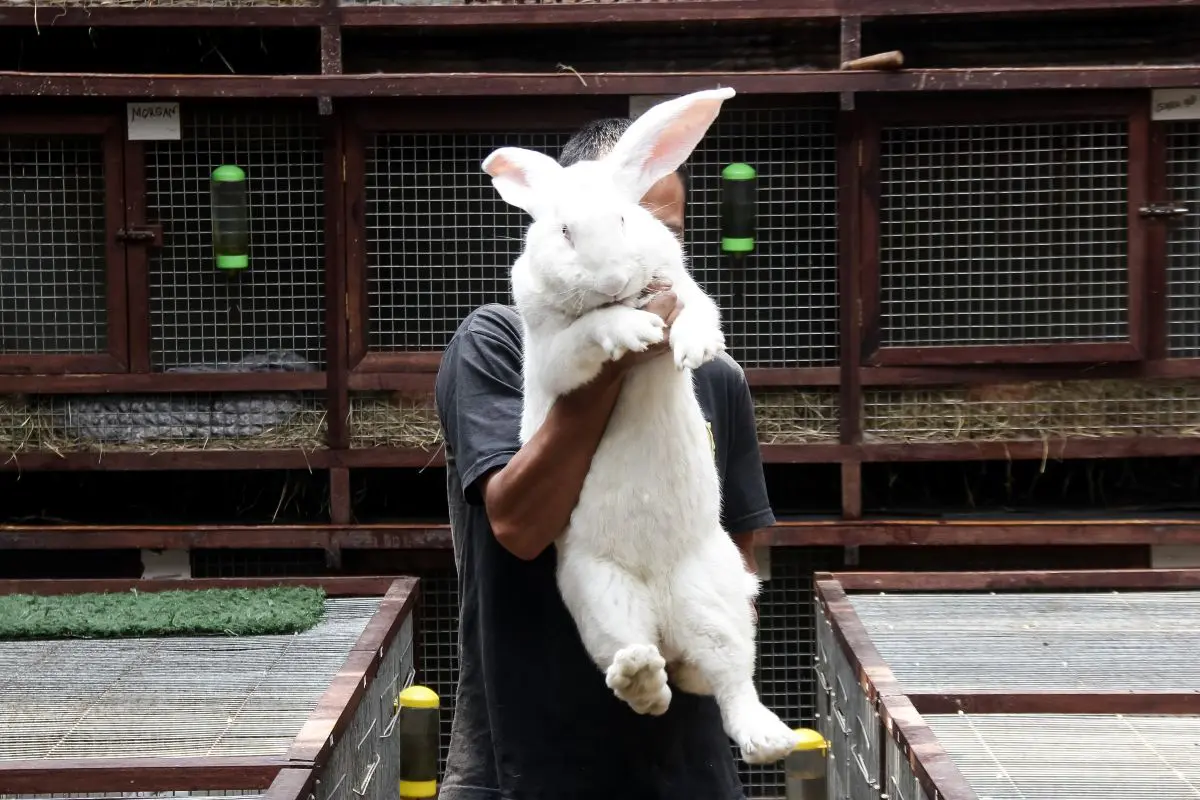
What is the Friendliest Giant Rabbit Breed?
The Flemish Giant is often called the “gentle giant” of the bunny world. Known for their calm, patient temperaments, they tend to be more tolerant of handling and enjoy human company. Their laid-back personalities make them one of the best choices for families with children or other pets.
Other friendly large rabbit breeds include the British Giant, which has a relaxed and easy-going nature, and the Giant French Lop, known for being cuddly and affectionate when properly socialized.
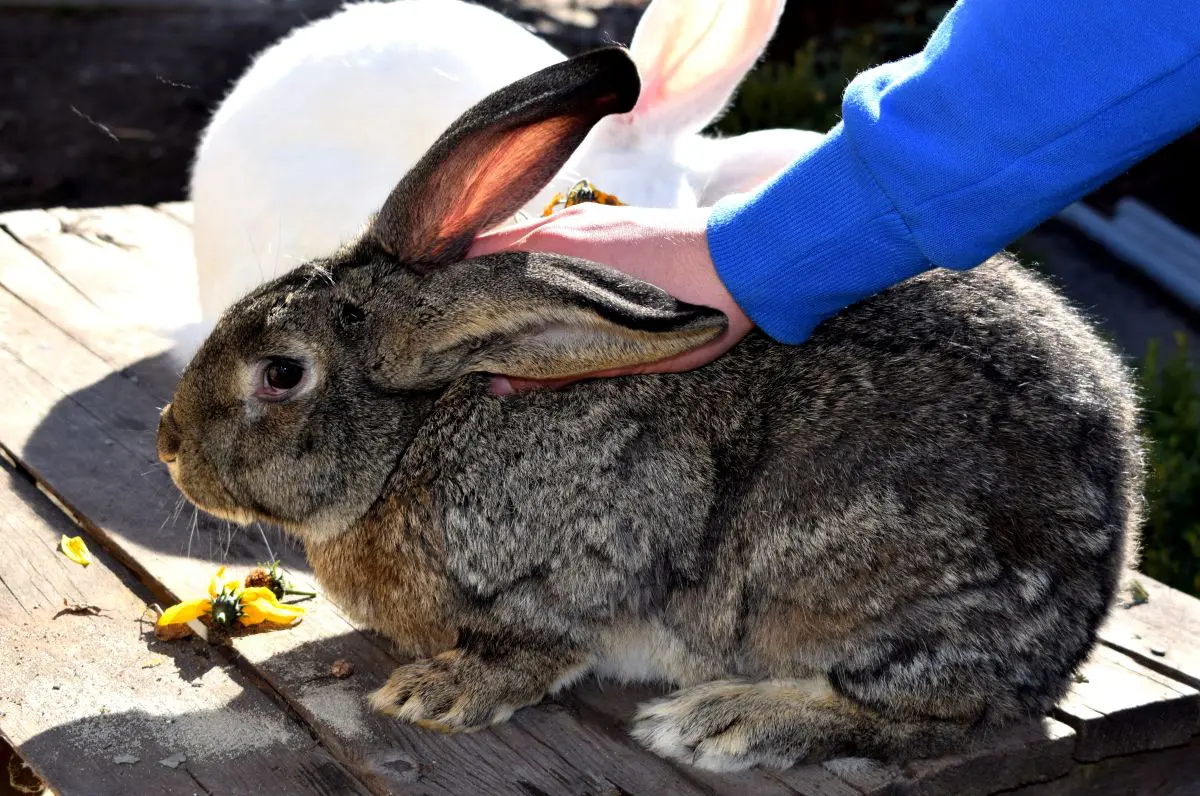
Which is Bigger, Flemish or Continental?
While both breeds are impressive in size, the Continental Giant rabbit tends to be larger overall.
- Flemish Giant rabbit size: 15–25 pounds, about 2–2.5 feet long.
- Continental Giant rabbit size: 16–20 pounds on average, but some individuals grow well over 40 pounds and exceed 4 feet in length.
Giant Rabbit as a Pet
Owning a giant rabbit can be a rewarding experience, but it comes with unique challenges:
- Housing: Standard rabbit cages are far too small. Many owners use extra-large dog crates, custom pens, or even free-roam their rabbits in rabbit-proofed rooms.
- Diet: Expect to provide large amounts of hay, leafy greens, and pellets daily. A large rabbit breed eats significantly more than a smaller breed, so plan your budget accordingly.
- Treats: Treat your bunny to something special for bonding and enrichment.
- Exercise: These bunnies need plenty of room to hop, stretch, and play.
- Health: Giant breeds are prone to sore hocks (pressure sores on their feet) and arthritis. Regular vet checkups are essential.
That said, the affectionate personalities, striking appearance, and calm temperaments of giant rabbits make them wonderful companions for the right families.
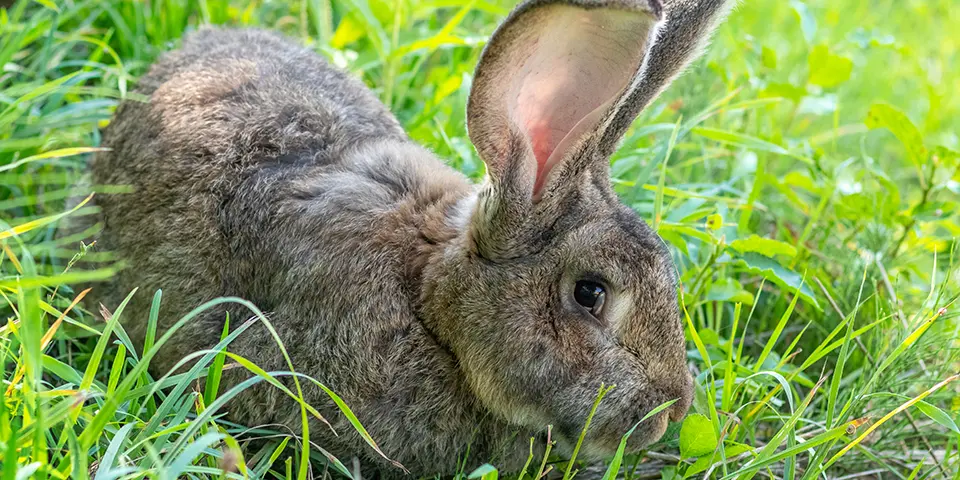
How Long do Giant Rabbits Live?
Similar to what we see in dog breeds, breeds of large rabbits tend to have shorter lifespans, although there is some variation from breed to breed. Typically speaking: the larger the rabbit, the shorter the lifespan. Large rabbit breeds can live around 5-12 years, but age can vary wildly depending on an individual’s breed, genetics, and long-term diet.
Making sure that your sweet bun gets plenty of fresh greens, unlimited hay, and a high-quality fortified pelleted diet is a vital first step to ensure your bunny has a good chance at a long, happy life. Keeping your giant bun healthy and hopping also requires plenty of exercise and the advice of a rabbit-savvy veterinarian who can provide yearly checkups and provide assistance in case of an emergency like GI stasis.
For more information about rabbit life spans and life stages, take a look at our blog.
Why are there Large Rabbit Breeds?
So, why are large pet rabbit breeds so much bigger than other bunnies? In most cases, selective breeding processes created these rabbit breeds for fur and meat purposes. Today, however, many households appreciate the personality and companionship that these larger breeds can offer.
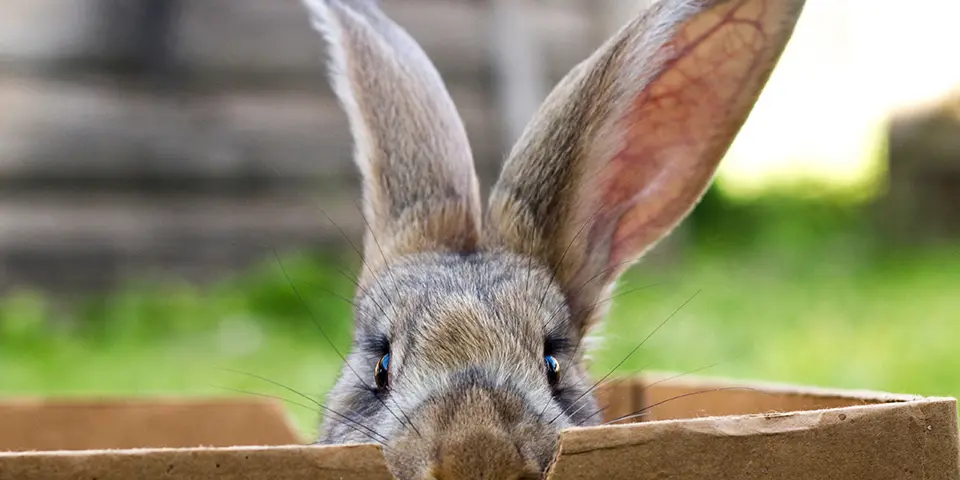
Do Giant Rabbits Make Good Pets?
Giant breeds of rabbits can make wonderful companions, but some things need to be considered before you assume they’ll be a good fit for your family.
Typically, the temperaments of giant rabbits are calmer and gentler—this makes them excellent choices for households with kids or other pets. However, like with any pet, each rabbit will have their own personality and will require socialization, understanding, and training.
These colossal buns have many of the same care requirements as their pint-sized cousins, but on a grander scale. For example, larger enclosures are necessary. Some breeds are 4 feet long when they stretch out, and this means that most rabbit cages sold in pet stores aren’t going to be large enough for your big bun to happily nap in, let alone live in.
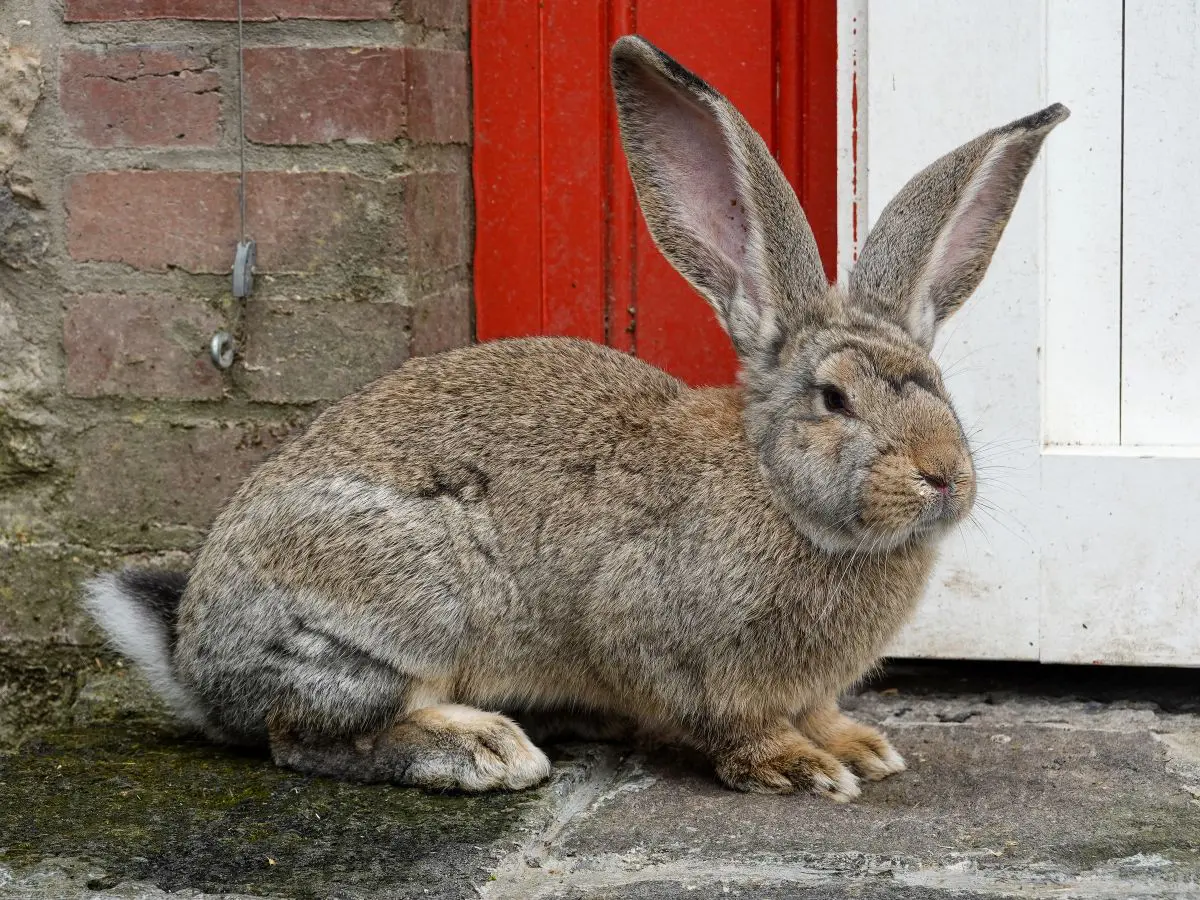
Keep in mind as well that rabbits have strong back legs. Paired with the size of a large rabbit breed, a typical baby gate or play pen is unlikely to keep an inquisitive rabbit contained. You may need to get creative with an extra-large dog crate, clip-together playpens, or consider free roaming for your plus-sized rabbit.
Large rabbit breed diets are similar to their smaller cousins, but much more food is needed to keep a large bunny’s belly full. Expect to offer much more hay, lots of fresh produce, tons of safe-to-chew enrichment, and more pelleted food than smaller breeds would ever need. For the pet parent, this means to plan on spending more money on hay, food, and produce.
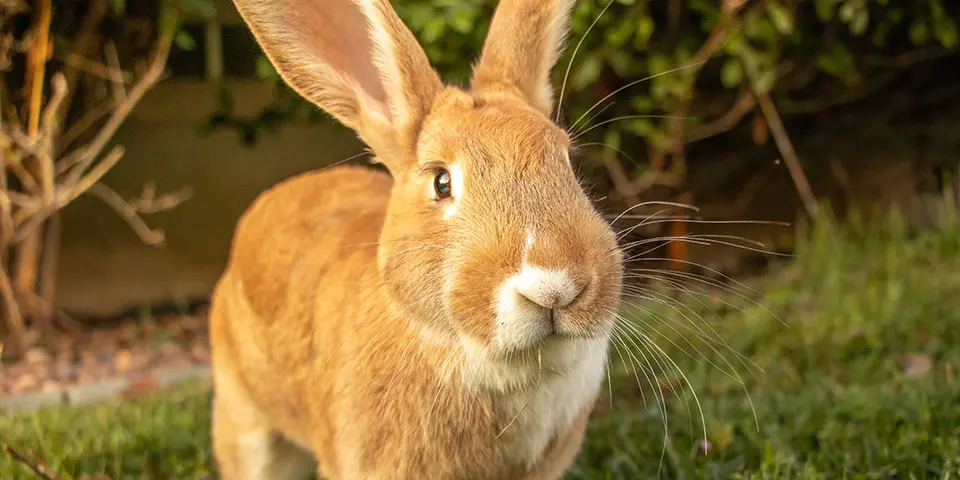
Are there Health Issues Specific to Giant Rabbit Breeds?
Giant rabbit breeds are susceptible to the same ailments and complications that their smaller cousins can get, but there are a few things that larger breeds are more prone to.
Sore Hocks or Pododermatitis
The most common issue that afflicts our giant friends is sore hocks, or pododermatitis. Since large breeds are so much heavier than small rabbits, they put more strain on their feet. Without adequate cushioning in their habitat they can develop pressure sores on the pads of their feet.
As they age, they can also be more prone to arthritis due to the extra strain placed on their joints. Make sure to provide plenty of soft bedding for your large rabbit, and check their feet often for signs of sores and abnormal hair loss.
Heat Intolerance
When it gets hot outside, wild rabbits retreat underground. This is impossible for our domesticated companions to do when they’re indoors and can’t dig a burrow deep down in the ground.
Because of this, keep your bunny away from windows that have direct sunlight without the option to escape the sun’s rays. Their habitat also needs to have adequate airflow at all times.
Giant breeds are even more susceptible to heat-related health concerns like heat stress and heat stroke than their smaller counterparts. Rabbits of all sizes don’t pant or sweat, so it’s harder for them to dispel heat. Many giant breeds also have thicker fur that retains heat, making them more prone to heat stroke than smaller rabbit breeds.
Top 13 Giant Rabbit Breeds
Below, we include a comprehensive list of giant rabbit breeds and information about each breed.
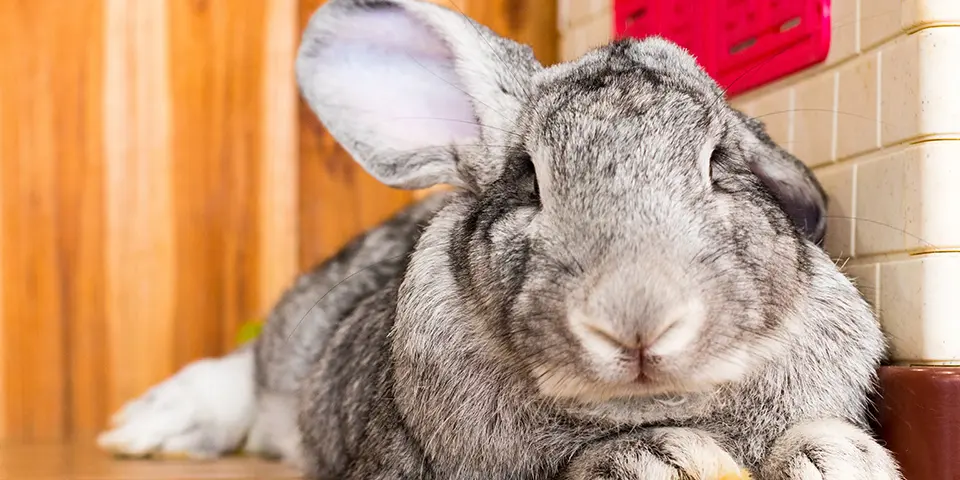
#1 Flemish Giant Rabbit
- Lifespan: Typically 8-10 years
- Weight: 15-25 pounds
- Temperament: Calm, patient, and intelligent. They enjoy companionship and are often friendly with children and other pets when socialized early.
Probably the most well-known large rabbit breed, the Flemish Giant is the “grandfather” of many of the other large rabbit breeds. It’s thought that the Flemish Giant as a breed came from breeding the now-extinct Patagonian Rabbit to smaller and more docile bunnies.
These buns are “gentle giants” and are some of the largest bunnies out there among our large breed rabbits. While they are generally 15-25 pounds in size, some individuals can get much larger.
Flemish Giants are curious and intelligent, so providing plenty of enrichment is necessary. They’re known to do well in households with kids and other pets, but early socialization is necessary.
The Flemish Giant Rabbit is one of the oldest giant breeds, dating back to the 16th Century Belgium. This breed was imported to United States in the 1890s but did not get much attention until around 1910 when rabbits began to be shown at poultry shows around the country. Their large size and beautiful colors quickly became endearing.
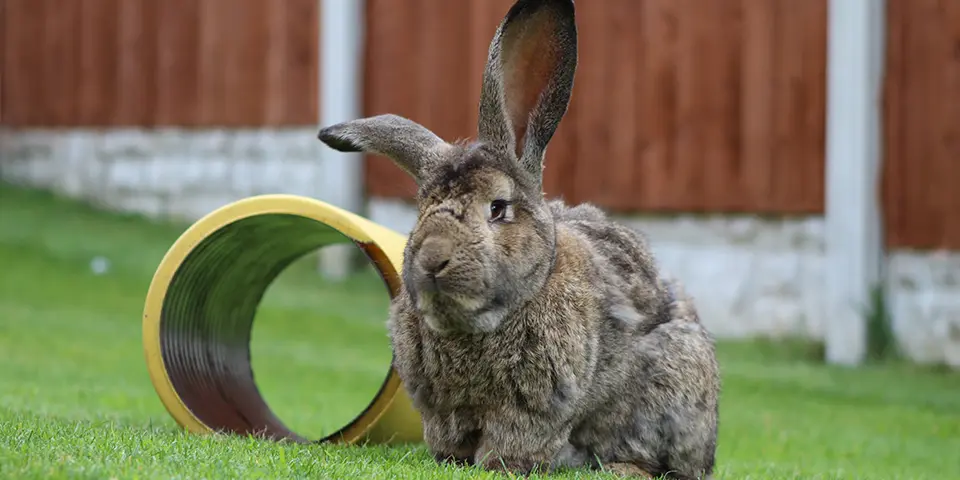
#2 Continental Giant Rabbit
- Lifespan: 5 years on average
- Weight: 16-20 pounds
- Temperament: Gentle, playful, and intelligent. They can be affectionate but may be less tolerant of handling than Flemish Giants.
The Continental Giant or German Giant is descended from the Flemish Giant. They share many physical characteristics, like their broad heads and long straight ears.
Both breeds have thick coats, but the Flemish Giant’s coat does not require much grooming. In contrast, the Continental Giant has a double coat with guard hairs and a softer underlayer. As a result, Continental Giants need to be groomed regularly.
Temperament-wise, the Continental is intelligent, gentle, and even-tempered, making them a great companion for families. Compared to the Flemish, the Continental may have a more playful and energetic nature. They tend to be a bit more impatient with being handled compared to their Flemish cousins, however, so children must be taught to respect and be patient with their giant friend.
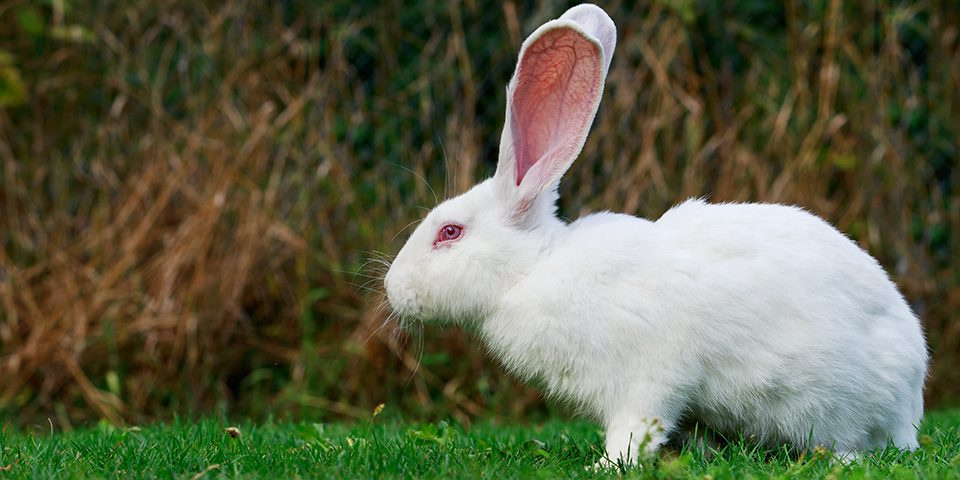
#3 Blanc De Bouscat
- Lifespan: Typically 9-11 years
- Weight: 12-14 pounds
- Temperament: Intelligent, gentle, and social. The Blanc De Bouscat enjoys companionship and makes a calm family pet but may dislike being handled too much. With early socialization, they bond well with children (who respect their space) and can coexist peacefully with other pets.
The Blanc De Bouscat Breed originated from the French village Bouscat in Gironde back in 1906. It has Flemish Giant, Argente Champagne, and French Angora breeds in its lineage. They are known for their beautiful pure white fur, red eyes, and strong, stout body with upright ears. Like many giant breeds, they were initially bred for their meat and fur but have become a popular family pet in France. In fact, they are a rare sight outside their country of origin!
Because of their French Angora origins, the Blanc De Bouscat has a coat that needs regular and consistent grooming to keep it free of mats.
The Blanc De Bouscat is known for being an intelligent, docile family pet. Similar to the Continental, they don’t always like being picked up; kids must be made aware to respect their bunny’s space. Blanc De Bouscats typically get along well with other pets, but early socialization is key.
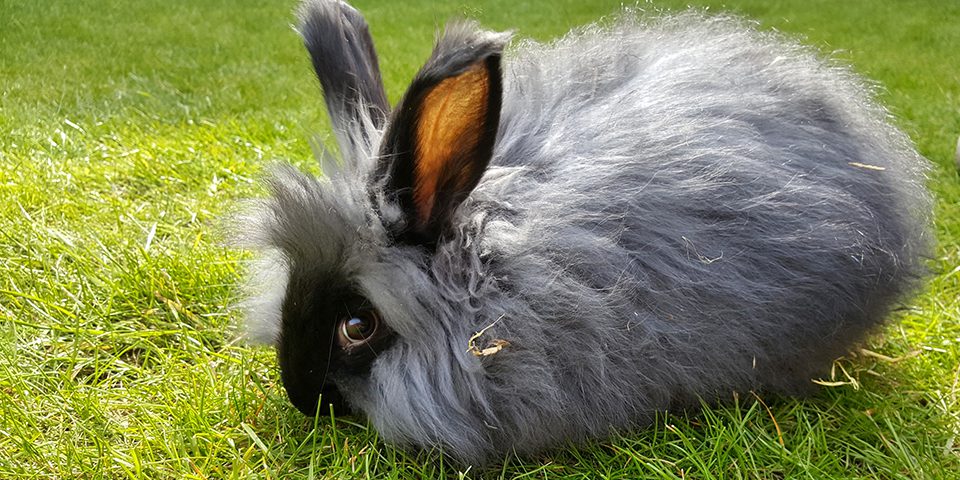
#4 Giant Angora Rabbit
- Lifespan: Typically 7-10 years
- Weight: 9-12 pounds
- Temperament: Calm, gentle, and highly social. Giant Angoras thrive on family interaction and companionship. They enjoy human attention but require patience and consistent handling. Because of their wool coat, they need daily care and do best with dedicated owners who can give them both grooming and affection.
The Giant Angora is one of eleven different breeds of angora rabbits. This breed originated in the historical Angora region that existed in present-day Turkey. The rabbits were brought to France around 1723 and became popular pets amongst the French aristocracy in the 18th century. Arriving in the United States during the early 20th century, their wool continued to gain popularity.
The Giant Angora, like other Angora breeds, was bred for their silky soft coat. Their wool is similar to cashmere in that it is soft to the touch and incredibly warm. As a result, these rabbits need a lot of grooming care. They are also more prone to hairball blockages in the GI tract, so keeping them on a high-fiber, hay-based diet with plenty of hay is incredibly important to help prevent obstructions.
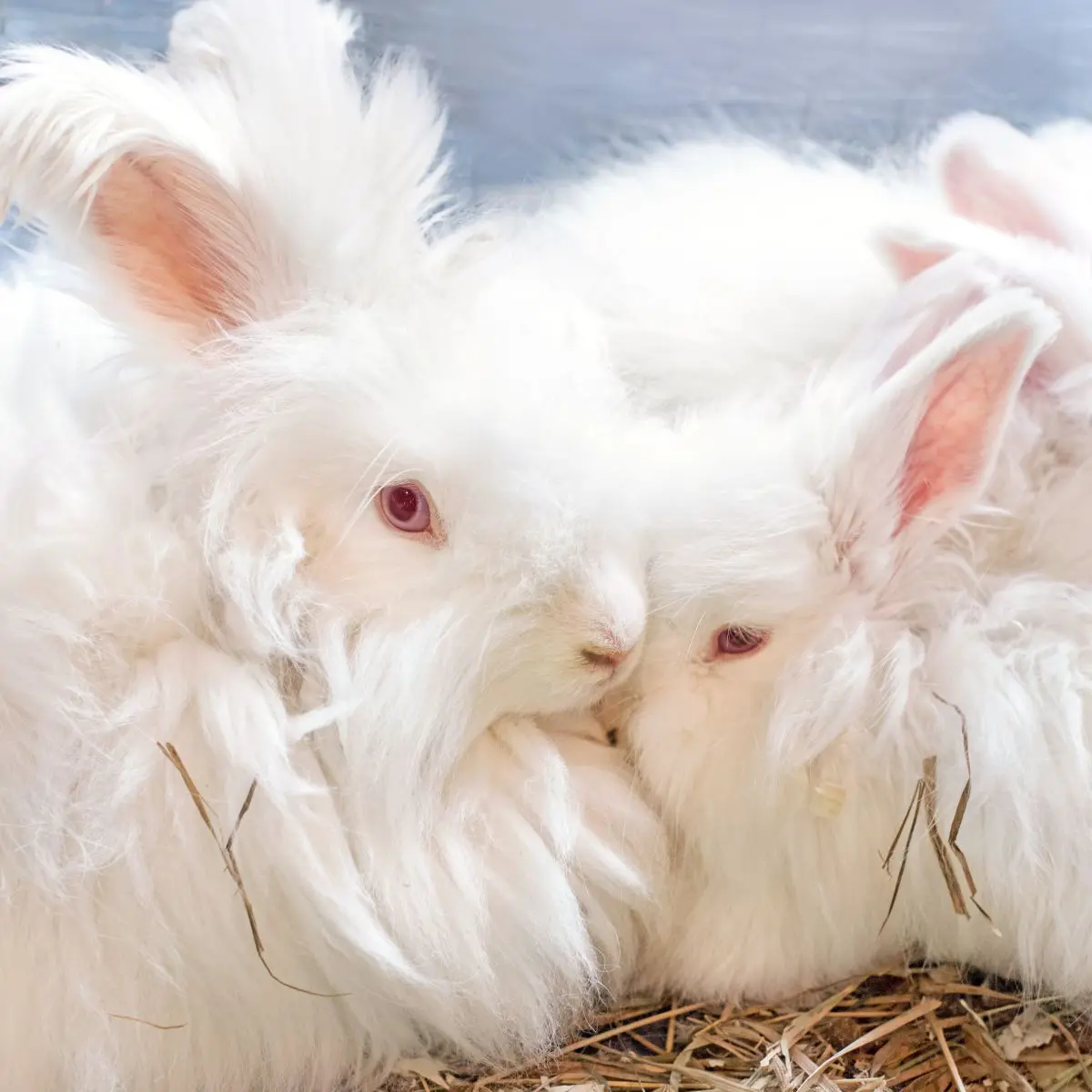
Like other giant breeds, the Giant Angora is known for their calm and gentle temperaments. They are extremely social rabbits and need plenty of time and socialization with their family.
#5 Spanish Giant Rabbit
- Lifespan: Typically 7-10 years
- Weight: Around 15 pounds
- Temperament: Easygoing, docile, and friendly. Spanish Giants are laid-back and well-suited to family life. They adapt easily to household routines and generally enjoy gentle interaction. With early socialization, they make wonderful companions for children and adults alike.
The Spanish Giant is thought to be a result of crossbreeding between the Flemish Giant and other large Spanish breeds. This breed nearly went extinct until Spain started working to bring it back in 2009.
They have short, dense fur that comes in a variety of colors, and long erect ears.
Like their Flemish cousin, Spanish Giants are known for an easygoing temper that makes them ideal family pets.
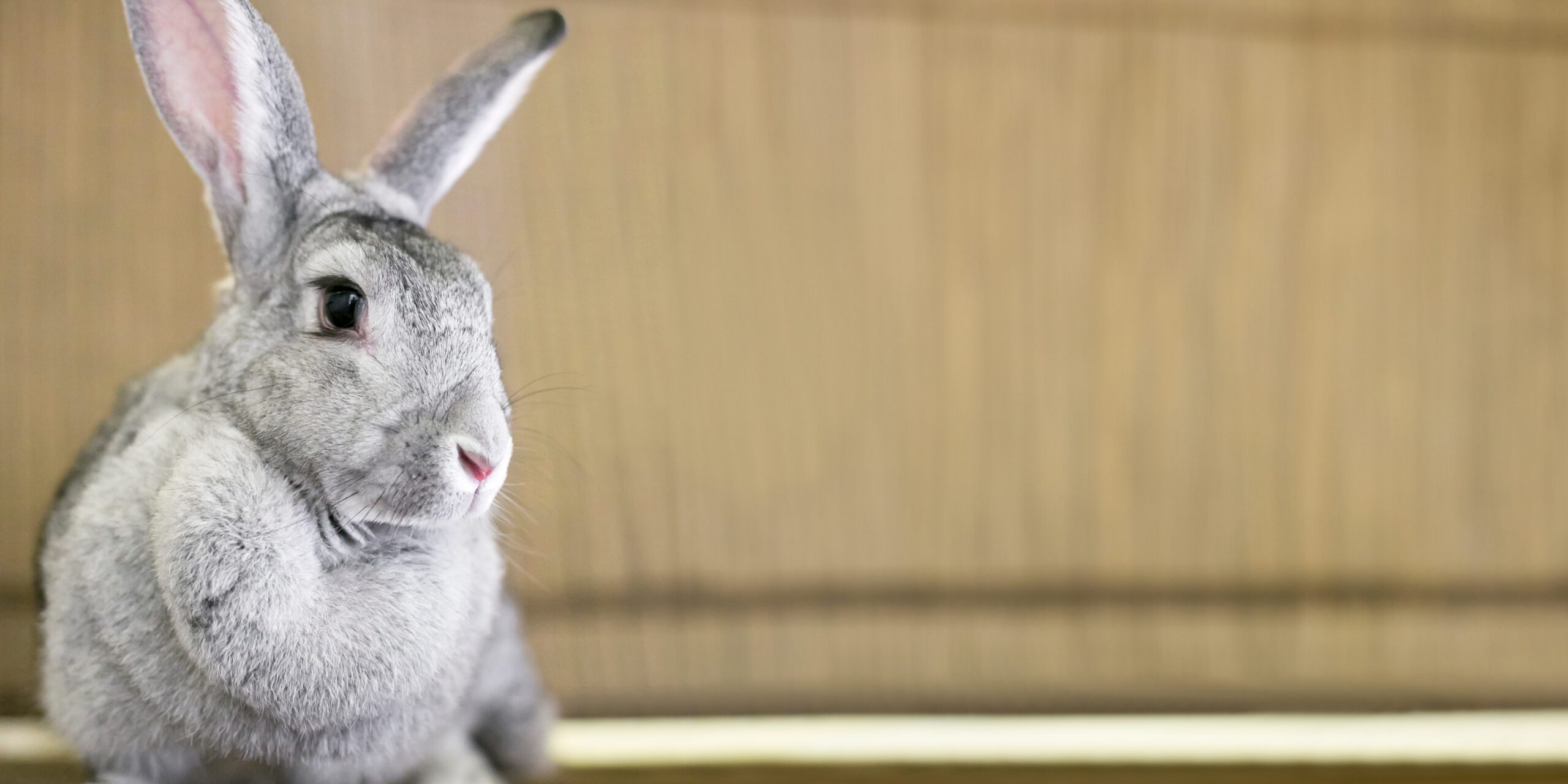
#6 Giant Chinchilla Rabbit
- Lifespan: Typically 8-9 years
- Weight: 13-15 pounds
- Temperament: Relaxed, affectionate, and people-oriented. The Giant Chinchilla is often described as “lazy” compared to other giant breeds, but this makes them ideal for families who want a calm, low-energy companion. They tolerate handling well when introduced early and bond closely with their humans.
The Giant Chinchilla rabbit was created in the United States in 1921 by breeding a Flemish Giant with the Chinchilla breed of rabbit. The goal was to create a rabbit that would provide larger amounts of soft, chinchilla-like fur. Their coat is a soft, dense, blue-grey color, and they have a white underbelly.
Giant Chinchilla coats require regular grooming and like the Giant Angora, it’s important to provide plenty of hay to keep their digestive systems moving to help prevent hairballs.

Temperament-wise, the Giant Chinchilla is so laid back that they might be seen as lazy! They are social and enjoy being with their families, but they might need a little encouragement to get moving. They do well with handling as long as they’re introduced to the handling process early. This breed is a good option for first-time rabbit owners who are looking for a larger rabbit.
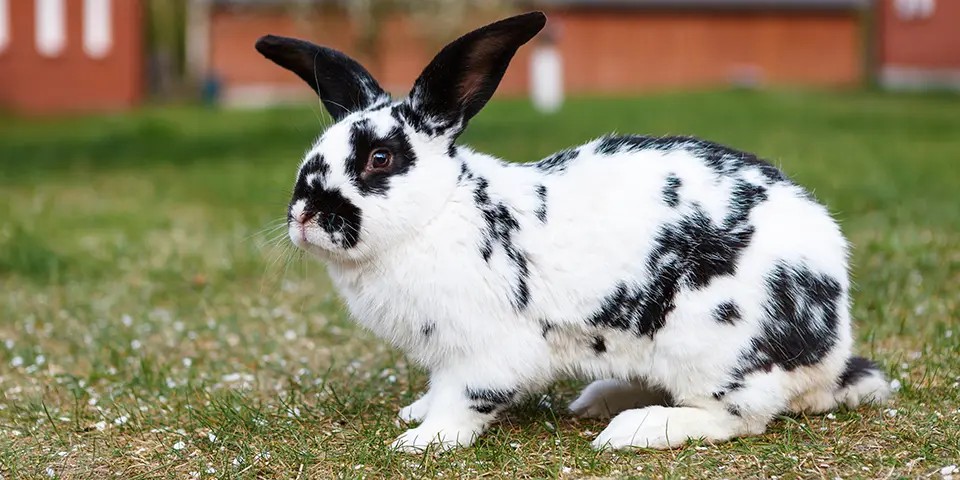
#7 Checkered Giant Rabbit
- Lifespan: Typically 5-8 years
- Weight: Around 12 pounds
- Temperament: Energetic, curious, and active. Checkered Giants need plenty of space to run and play, and they bond strongly with their families. They may not be as cuddly as other giant breeds but enjoy companionship and interaction. Best for experienced owners or families with older children.
The Checkered Giant was bred by crossing large spotted rabbits with Flemish Giants. This breed became especially recognizable by the butterfly-shaped marking on their face.
As such they became known as the Géant Papillon in France, and the breed is known as the Giant Papillion in other areas of Europe. This breed came to the United States around 1910 and has grown in popularity under the Checkered Giant name.
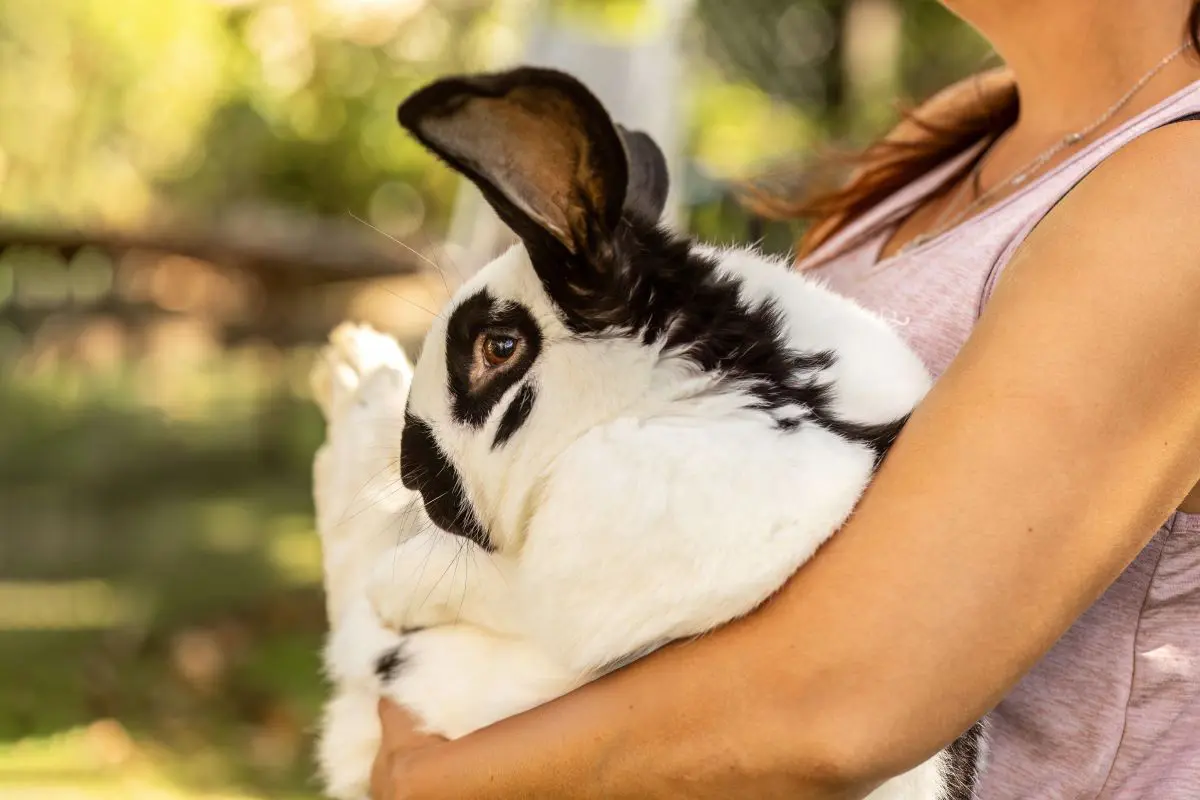
This breed has an arched body that is carried higher off the ground, making them look more like a wild jackrabbit than a cottontail.
The Checkered Giant needs plenty of space to move and has a lot of energy. Pet parents need to keep them stimulated with plenty of exercise and enrichment. While they aren’t quite as affectionate as some other giant breeds, they bond strongly with their people and want to spend time with them. This is a breed that tends to do better in households with older children.
#8 Hungarian Giant Rabbit
- Lifespan: Typically 8-12 years
- Weight: 9-12 pounds
- Temperament: Hardy, adaptable, and playful. Hungarian Giants are easy to handle and enjoy interacting with their people. Their curious and fun-loving nature makes them an excellent family pet, especially for those who want a more lively rabbit companion.
The Hungarian Giant’s weight range makes them one of the smaller breeds out of the large rabbit breeds.
While they come in a variety of colors, the most common color of the Hungarian Giant is brown or agouti. The Hungarian Giant rabbit has a short, dense coat that requires minimal grooming.
Temperamentally, they are known for being hardy and highly adaptable, which makes them excellent family pets that are easy to handle. They are playful and enjoy interacting with their families.
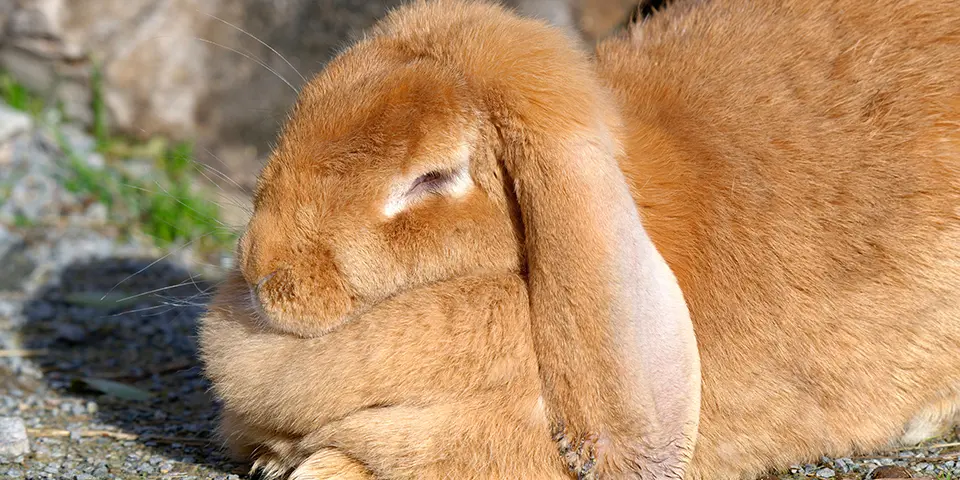
#9 Giant French Lop Rabbit
- Lifespan: Typically 7-10 years
- Weight: 10-15 pounds
- Temperament: Sweet, affectionate, and social. Known for their cuddly personalities, Giant French Lops enjoy close contact and do well in pairs. With proper socialization from a young age, they become loyal and loving companions.
The Giant French Lop was first seen in France during the 19th century. The breed was created by crossing an English Lop and a Géant Papillon. This breed weighs about 10-15 pounds but must be at least 10 pounds to qualify as a giant.
The Giant French Lop has a broad forehead, chubby cheeks, and long floppy ears that reach below the chin. They come in a wide range of colors including: white, black, blue, brown, fawn, opal, chinchilla, and Siamese.
These adorable rabbits are known for their friendly and social nature but need to be socialized at a young age. They are cuddly with people and do really well in pairs.
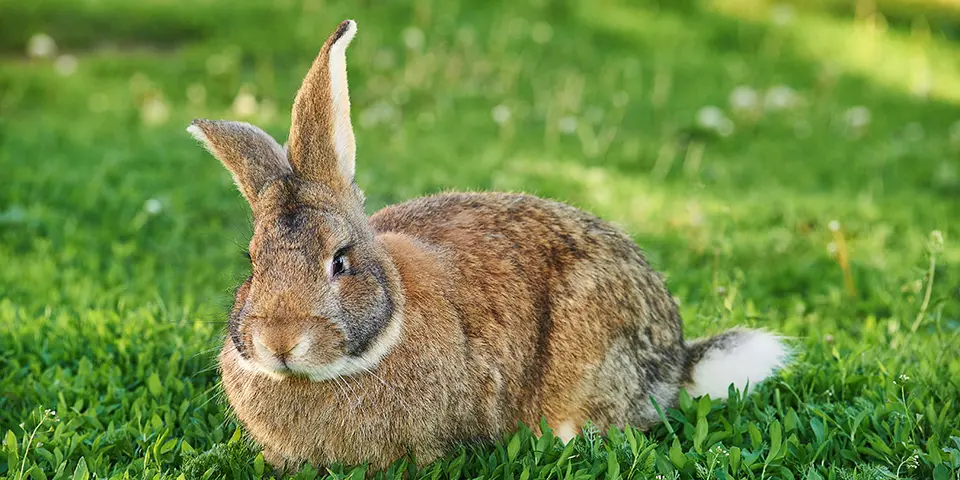
#10 British Giant Rabbit
- Lifespan: Typically 5-8 years
- Weight: 11-15 pounds
- Temperament: Docile, calm, and easy-going. British Giants are relaxed pets who enjoy lounging with their families. They adapt well to family life and are great with children due to their tolerant nature.
The British Giant was derived from the Flemish Giant in the 1940s and is most commonly found in the United Kingdom.
This breed has a long, powerful body, upright ears, and a classic cottontail. The British Giant comes in a variety of colors and has a medium-length coat.
This is a great family rabbit like most of our giant breeds due to their easy-going and docile nature. Their favorite pastime is stretching out and relaxing with their family.
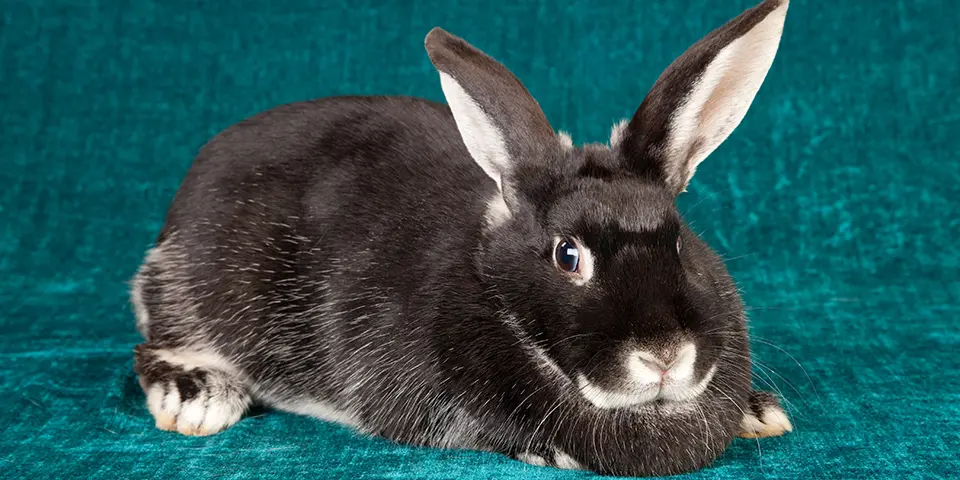
#11 Silver Fox Rabbit
- Lifespan: Typically 5-10 years
- Weight: Around 12 pounds
- Temperament: Gentle, calm, and family-friendly. Silver Fox rabbits are known for their affectionate nature and make great companions for children and adults alike. Their relaxed personality and adaptability make them one of the most popular giant breeds in the U.S.
The Silver Fox Breed originated in early 20th century America and was created by crossing the Champagne d’Argent, American Blue, and English Checkered Giant.
This breed has a short, dense coat with silver tips, but does also come in blue, chocolate, lilac, and black colors. The Silver Fox has a medium build and upright ears.
Great for kids or adults, the Silver Fox’s calm temperament has made them a popular choice for a pet rabbit in the United States.

#12 Champagne D’argent
- Lifespan: Typically 5-10 years
- Weight: 9-12 pounds
- Temperament: Gentle, patient, and steady. This breed is affectionate without being overly demanding, making them a reliable choice for families. They enjoy spending time with people but are just as content relaxing in a safe, comfortable environment.
The Champagne D’argent is one of the oldest rabbit breeds and can be traced back to the 1600s in France. They were originally bred for their thick, soft, and silver-colored fur that often transitions to black on the nose and ears.
This large rabbit breed was imported to the United States early on and is a common sight at rabbit shows due to their unique color.
Champagne D’argent as a breed has a compact build and a calm and gentle nature, making them a great option for family homes.
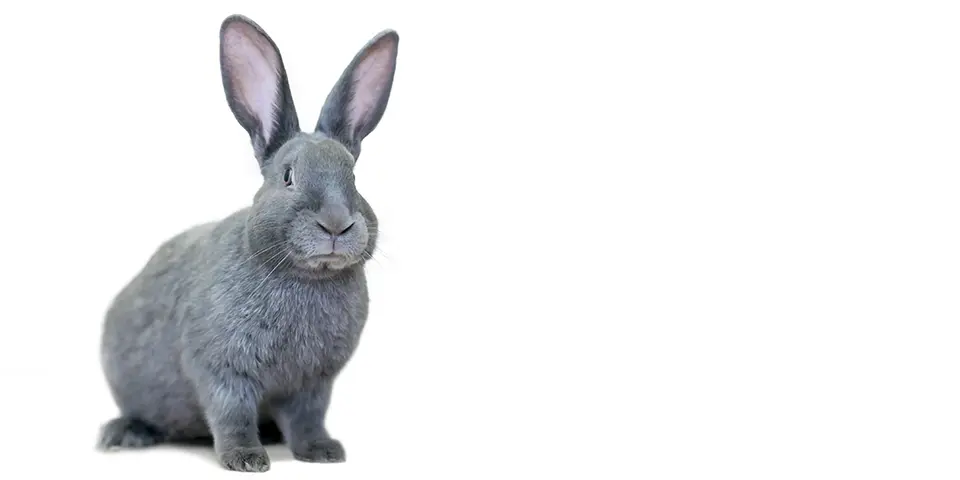
#13 American Rabbit
- Lifespan: Typically 5-10 years
- Weight: 9-12 pounds
- Temperament: Docile, quiet, and mild-mannered. American Rabbits are calm companions who prefer gentle handling and a predictable routine. They are easy to manage and well-suited for families or first-time rabbit owners looking for a larger breed.
The American Rabbit was originally recognized in March 1918 and was first known as the German Blue Vienna. The name changed post-WWI to the American Blue. Little is known about the specific breeds used to create the American, although blue Flemish Giants are likely part of their origin.
In the 1920s the breed became a hot commodity that was highly prized by furriers of the time. Over time, the American Rabbit dropped in popularity, and it is now one of the rarest breeds in America. Efforts are ongoing to save this breed from extinction.
They have a stunning, medium blue-grey coat and short, erect ears. The American Rabbit is known to have a docile nature that makes them a wonderful option for a family pet.
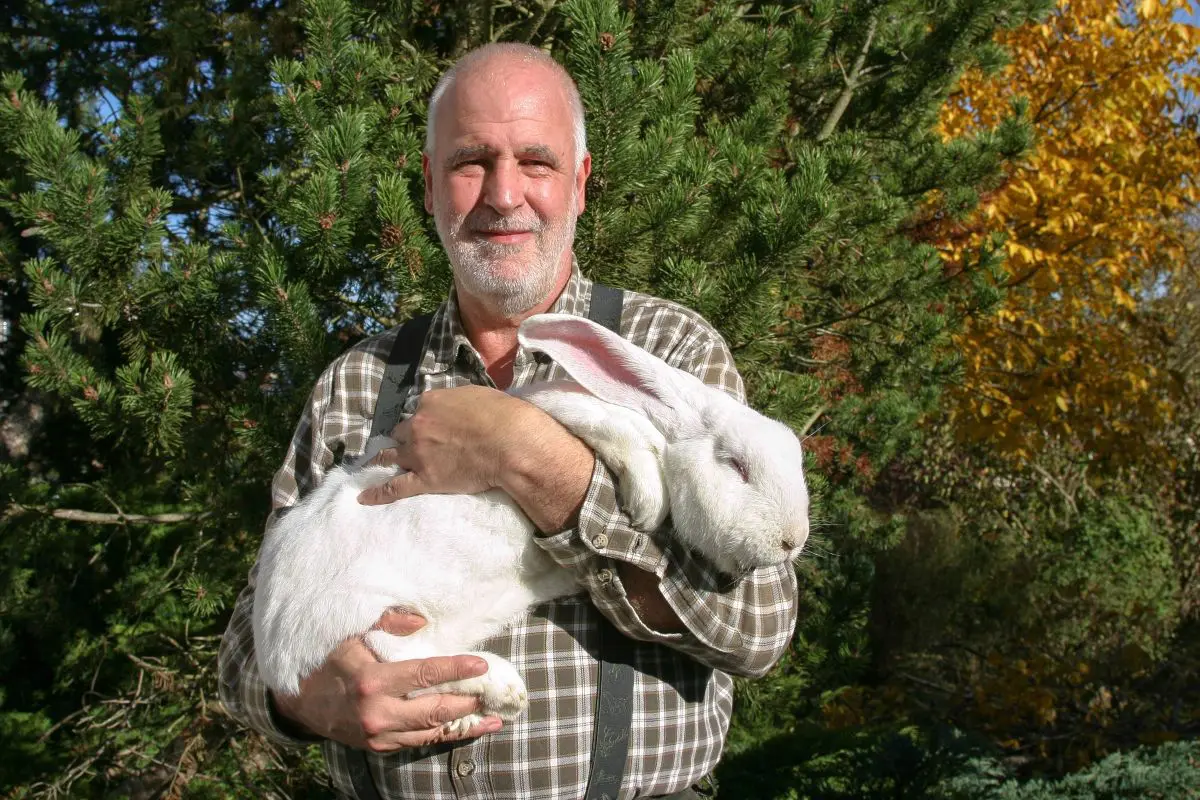
Final Thoughts
From the Flemish Giant rabbit to the Continental Giant rabbit, large rabbit breeds have captured the fascination of pet owners around the world. These rabbits are not only striking in size but also gentle in nature, making them wonderful family companions, if you’re prepared for the space, diet, and care they require.
If you’ve ever dreamed of snuggling a “giant bunny,” just remember: bigger bunnies come with bigger responsibilities. Thinking of becoming a first-time giant rabbit pet parent? Check out Oxbow’s guide How to Care for Your Rabbit.
